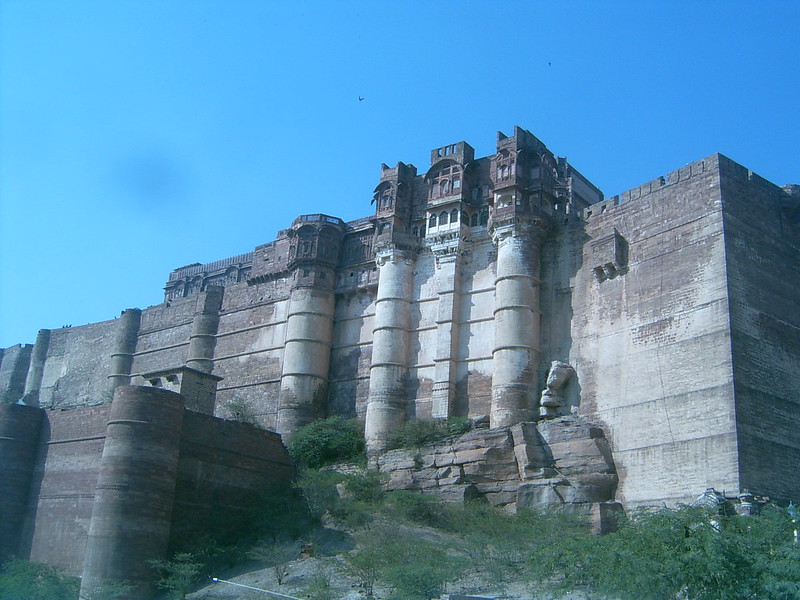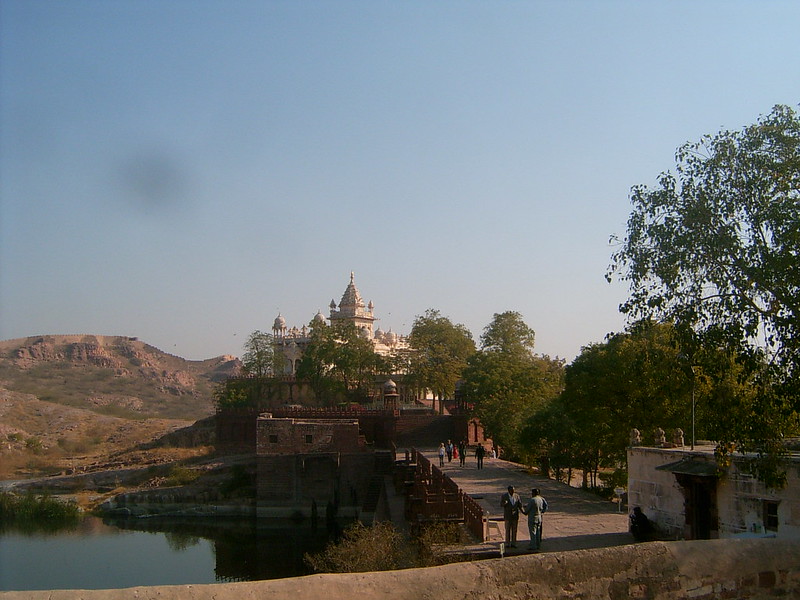| Destination: Jodhpur |
| Destination Type: Fort and Palaces |
| City: Jodhpur |
| Country: India |
- Private Full-Day Tour to Bishnoi Villages and Mehrangarh Fort in Jodhpur WITH GUIDE
- Private Half Day Tour Bishnoi and Rajasthani Craft Villages Jodhpur
- Private Full-Day City Tour of Jodhpur
- Private Transfer from Jodhpur to Udaipur with En-Route Tour of Ranakpur Jain Temple With Guide
- Transfer from Vadodara Airport/Hotel to Vadodara City Centre
- Private Transfer from Jodhpur Airport/Railway Station/Hotel to Jaipur City Center
- Private Transfer from Jodhpur Airport/Railway Station/Hotel to Udaipur City Center
- Private Transfer from Jodhpur Airport/Railway Station/Hotel to Jaisalmer City Center
- Private Transfer from Jodhpur Airport/Railway Station/Hotel to Pushkar City Center
- Private Transfer from Jodhpur Airport/Railway Station/Hotel to Mount Abu City Center
- Private Transfer from Jodhpur Airport/Railway Station/Hotel to Ajmer City Center
- Private Transfer from Jodhpur Airport/Railway Station/Hotel to Chittorgarh City Center
- Private Transfer from Jodhpur Airport/Railway Station/Hotel to Bundi City Center
- Private Transfer from Jodhpur Airport/Railway Station/Hotel to Bikaner City Center
By Rail : Jodhpur is connected to Delhi and Mumbai and the airport is about 5 kilometres from the city centre.
By Road : Jodhpur is well-connected by road to all major cities and towns.
By Rail : Jodhpur is well-connected by direct trains from all metros and major cities in India
Jodhpur, the second largest city in Rajasthan is popularly known as the Blue City. The name is clearly befitting as most of the architecture – forts, palaces, temples, havelis and even houses are built in vivid shades of blue. The strapping forts that tower this magnificent city sum up to a spectacle you would not want to miss. The mammoth, imposing fortress of Mehrangarh has a landscape dominating a rocky ridge with the eight gates leading out of the fortress. The new city is located outside the structure. Jodhpur is also known for the rare breed of horses known as Marwari or Malani, which are only found here.
Jodhpur marks its origin back to the year of 1459 AD. The history of this prosperous city revolves around the Rathore clan. Rao Jodha, the chief of Rathore Clan is credited with the origin of Jodhpur in India. The city is known to be built in place of the ancient capital, Mandore of the state of Manwar. Hence, the people of Jodhpur and surrounding areas are commonly known as Marwaris. Also, it is believed that the relics of Mandore can still be witnessed in the Mandore Gardens.
Mehrangarh Fort : Rising perpendicular and impregnable from a hill which is 125 metres above Jodhpur’s skyline is the Mehrangarh Fort. This historic fort is one of the most famous in India and is packed with history and legends. Mehrangarh Fort still bears the imprints of cannonball attacks courtesy the armies of Jaipur on its second gate. Chiselled and sturdy, the fort is known for its exquisite latticed windows, carved panels, intricately decorated windows and walls of Moti Mahal, Phool Mahal and Sheesh Mahal.
Khejarla Fort : Located 85 kilometres from the main city, the 400-year old Khejarla Fort is situated in a rural setting. The stunning red sandstone monument, now a hotel, is an example of Rajput architecture. Visitors will be mesmerised by the fort's picturesque settings, latticework friezes and intricate Jharokas.
Umaid Bhawan Palace : Umaid Bhawan Palace was built by Maharaja Umaid Singh in 1929 to counter a famine which had hit the state at the time. It was also known as the Chittar Palace while being constructed thanks to the use of stones drawn from the Chittar hill. The palace was designed by HV Lanchester, a renowned British architect, and was completed in 16 years. Built with sandstone and marble, the architecture of the palace is described as a blend of lndo-Saracenic, Classical Revival and Western Art Deco styles. It is recognised as one of the largest private homes in the world and also one of the more spectacular buildings. It is the only palace built in the 20th century.
Moti Mahal : Moti Mahal, as the name suggests, is the Pearl Hall where the royal families held their audience. The hall is known to have glass windows and five nooks that enabled the queens to listen to the proceedings taking place in the Sringar Chowki, The Royal Throne of Jodhpur.
Sheesh Mahal : Situated within the compound of Mehrangarh Fort is the glass palace of Jodhpur, popularly known as Sheesh Mahal. This magnificent piece of architecture is adorned with walls of mirror work that stretch across ceilings and to the floors. It is superimposed by the mirror work of brightly painted religious figures cast in plaster.
Phool Mahal : Going by the name, the Phool Mahal or Flower Hall is the most exorbitant of all the halls in the palace. This beautiful chamber is said to be the pleasure dome for the Maharajas. The gold used for constructing the Mahal came from Ahmedabad, Gujarat.
Chamunda Mataji Temple : Chamunda Mataji was Rao Jodha’s favourite goddess and so her idol was bought to the Mehrangarh Fort. Thus, the fort became a place of worship and was turned into a temple. Since then, locals have followed the culture of worshipping Chamunda Mata. In fact, till date, the goddess remains the Isht Devi (the adopted goddess) of Maharajas and the royal family.
Ranisar Padamsar : Located near the Fateh Pole in Mehrangarh, the Ranisar and Padmasar are adjacent lakes that were constructed in the year 1459. Ranisar Lake was built on orders of Queen Jasmade Hadi, Rao Jodha's wife while Padmasar Lake was ordered by Queen Padmini of Rao Ganga, daughter of Rana Sanga of Mewar.
Jodhpur Government Museum : The government museum, located in Umaid Garden, houses a rich collection of relics including armoury, textiles, local art and crafts, miniature paintings, portraits of rulers, manuscripts and images of the Jain Tirthankaras. Wildlife lovers can also visit the zoo, which is located close by.
Jaswant Thada : This milky white memorial built towards the end of the 19th century as a tribute to the leader Jaswant Singh is a huge tourist attraction. Jaswant Singh, who ruled Jodhpur, invested well in his state. He made attempts to bring down the level of crime, subdue dacoits, built railways and broadly worked on raising the economy of Marwar.
Ghanta Ghar : Ghanta Ghar, also known as the clock tower of Rajasthan, is situated in one of the busiest areas of Jodhpur, the Sadar Bazaar. It was constructed by Shri Sardar Singh Ji of Jodhpur. The Sadar Market is quite popular among tourists, who throng the streets to purchase Rajasthani textiles, clay figurines, miniature camels and elephants, marble inlay work and classic silver jewellery.
Mahamandir Temple : Mahamandir, meaning great temple, is a sanctified spot where tranquillity reigns supreme. Situated on Mandore road, the temple is an architectural wonder. It is supported by 84 pillars and ornamented with detailed designs and figures depicting various postures of Yoga.
Mandaleshwar Mahadev : The Mandaleshwar Mahadev was built by Mandal Nath in AD 923. It is believed to be one of the oldest shrines in the city. The walls of the temple have some beautiful paintings of Lord Shiva and Goddess Parvati.
Sardar Samand Lake and Palace : Built on the banks of the Sardar Samand Lake by Maharaja Umaid Singh in 1933, the Sardar Samand Lake Palace is a spectacular hunting lodge. It remai
Full Day City Tour Jodhpur
Half Day Village Safari Without Lunch
Half Day Village Safari With Lunch + Half Day City Tour Jodhpur

